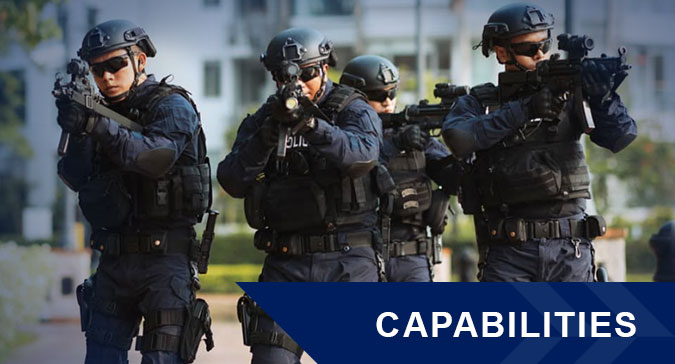A walking trail brings you into the past to show the landmarks and milestones in the storied history of the SPF.
By: Rachel Ng
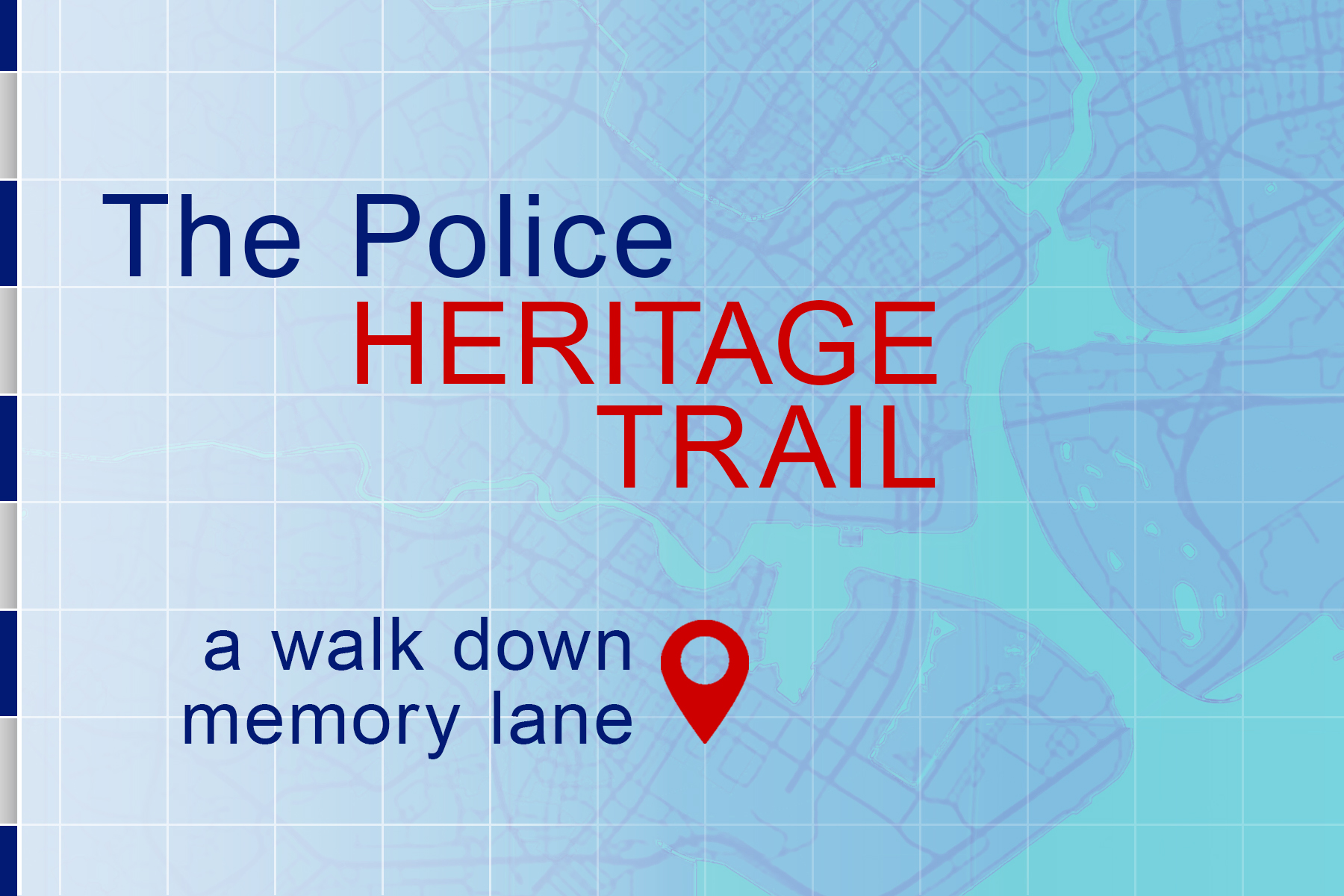
On 26 November 2020, the Singapore Police Force (SPF) launched the Police Heritage Trail, a one-of-a-kind trail in Singapore that focuses exclusively on significant landmarks in our law enforcement history. The Trail consists of nine sites in Singapore’s Central Area and marks the SPF’s contributions over 200 years. Take a walk down memory lane with us!
The First Police Office
A highlight of the Trail is a physical marker near the mouth of the Singapore River, in front of the Asian Civilisations Museum Green. This marker indicates not only the start point of the Trail but also the location of the first Police Office, which was built shortly after the establishment of the police force in May 1820.
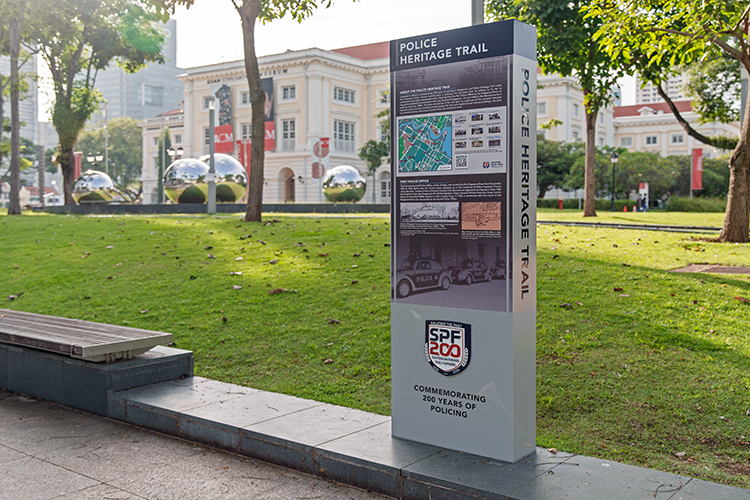
A symbol of law and order in Singapore’s early years, the Police Office overlooked the busy river where commerce flourished and diverse migrant communities settled close to its banks. It stood at this location from December 1820 to February 1823.
Before this, the 12-man team that was running on a shoe-string budget operated out of the residence of Police Assistant Francis James Bernard, located in front of Victoria Concert Hall. He was appointed to the post in 1820 by his father-in-law, Major William Farquhar, the first British Resident of Singapore.
Duties of the early police force included fighting crime, working with the chiefs of native populations to enforce law and order, fighting fires, numbering streets, settling disputes over minor debts and witnessing contracts for land transfers.
Kreta Ayer Redesigned Neighbourhood Police Post (NPP) Permanent Exhibition
Visitors to the Trail can explore a permanent exhibition at the redesigned NPP, which provides information about the Trail and insights into the historic area around the NPP. This redesigned NPP may not look like it, but it is more than 100 years old!
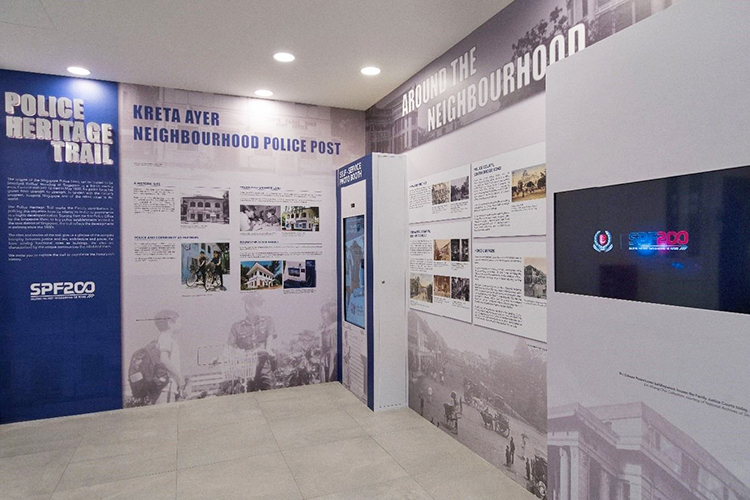
Built in 1908, the North Canal Road Post Office was initially sited within the Police Courts compound as there was a great demand for stamps used on official documents by both the Courts and the nearby Central Police Station (both of which are no longer standing).
In 1990, the building was repurposed by the SPF and commenced operations as the 76th NPP in Singapore. As the only NPP in the Central Business District, Kreta Ayer NPP was kept busy. By 1995, crime rates at Kreta Ayer saw a 20% drop. The NPP also worked with crime prevention committees (comprising shop owners, tenants and property management firms) on crime prevention measures. Today, it continues to serve the public as a redesigned NPP.
The Old Hill Street Police Station
The Old Hill Street Police Station was built in 1934 as part of an extensive infrastructural scheme spearheaded by then Inspector-General of Police Harold Fairburn to improve Police capabilities. It amplified the Police’s presence in the city centre at a time when Singapore had the reputation of being the “Chicago of the East”. It also enabled the Police to target the heart of secret society activities in Chinatown and effectively break up gangs to clean up the town.
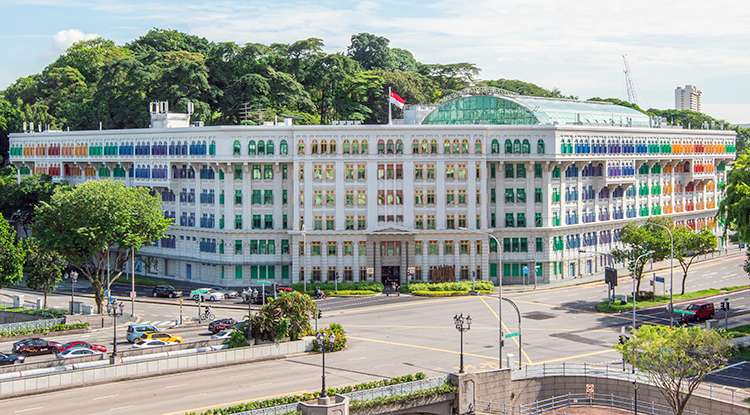
Barracks facilities, luxurious by the standards of that time, boosted the officers’ morale and were seen as an incentive in recruitment. It showed the Police’s commitment in the 1930s to ensure the well-being and morale of its men. The Police station, cells, constables’ quarters, canteen, recreation rooms and parade square were on the first level. The Old Hill Street Police Station could accommodate about 1,000 Police personnel, including their families.
With more than 900 double-leaf louvred windows to keep the building well-ventilated, it was also equipped with modern amenities like flushing toilet systems and lifts to access higher floors. More than a workplace, the Old Hill Street Police Station was also home to Police officers and their families. The canteen was where they shared meals and stories, forged friendships and built camaraderie. Every few months, movies were screened at the open-air courtyard. Residents knew one another very well and children often played together at the communal playground.
The building was vacated by the Police force in 1980. It was gazetted as a National Monument in 1998. It currently houses the offices of the Ministry of Culture, Community and Youth and the Ministry of Communications and Information.
The Central Police Station
The Central Police Station was converted from Singapore’s first civil jail in 1849. Undergoing reconstruction in the 1880s and 1930s, the Central Police Station stood watch at the heart of Central Division until it was demolished in 1978. It was nicknamed “Yit Hor Mata Chu” (Number 1 Police Station) by locals.
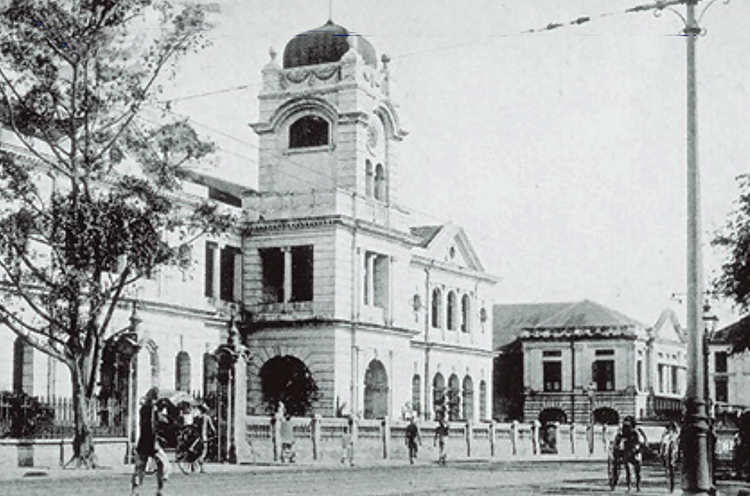
Throughout its history, it housed not just the Central Police Station but also the Police Headquarters (also known as Police Office) from the 1860s until the 1950s. For over a century, this station bore witness to riots and even crimes by the Japanese forces during World War Two.
In the 1930s, order in the city had improved – the operations of brothels had become illegal, opium dens fell in number and secret societies were under heavy surveillance. However, the deterioration of social conditions after the Second World War led to a resurgence of gang activities in Chinatown. From the 1950s, the Central Police Station became a base from which anti-secret society operations were carried out.
A common practice in the 1950s and 1960s was for gangs to collect protection money from those in their territory. They harassed the hawkers who thronged the roads around People’s Park during Lunar New Year, on top of collecting $10-$15 a month from them.
To combat the gangs, officers patrolled late into the night at the areas where the gangsters struck. In 1948, the Police gate-crashed a gang initiation ceremony. It resulted in the arrest of 88 people and the seizure of triad initiation paraphernalia.
Criminal Investigation Department (CID) Headquarters
The CID Headquarters was built in 1931 to house what was known as the Detective Department. Located between Robinson Road and Cecil Street, the three-storey building became the base of operations for the Police to battle increasingly sophisticated crimes.
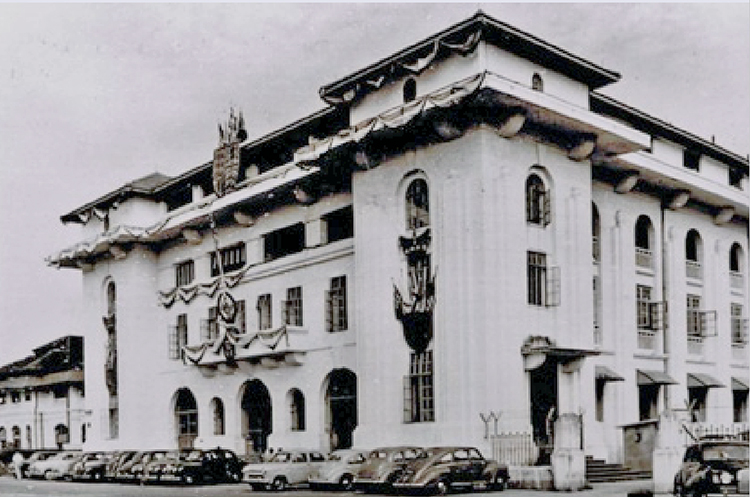
The carefully designed quarters, courtyards and recesses in the building allowed about 40 detectives, four European Inspectors, four Inspectors, four Sub-Inspectors and two Chief Inspectors to carry out their work away from public view. Inspectors were also able to leave the building for raids and missions undetected by taking the steps from the quarters to their waiting vehicles obscured by a brick wall.
The building housed state-of-the-art photographic studios, a criminal registry and facilities for criminal detection. Hailed the “Scotland Yard” of Malaya, the building’s style reinforced and represented the police’s authority through its columns and corridors. Offices occupied the ground floor and on the upper floors were living quarters for the officers and their families. There was also a “crush” room on the ground floor where visitors waited to be called and an enclosed exercise room for prisoners adjacent to their cells.
It also functioned as the base where operations were planned against crime syndicates and secret societies. The Special Branch – now known as the Internal Security Department – operated from the same building between 1940 to 1976 for joint efforts against secret societies and subversive organisations. After the building was demolished in 1993, the CID relocated to the Lower Barracks before moving to the Police Cantonment Complex in 2001.
Check out the Police Heritage Trail online. Want to learn more about the SPF’s proud history and heritage? Visit the Police Heritage Centre!



